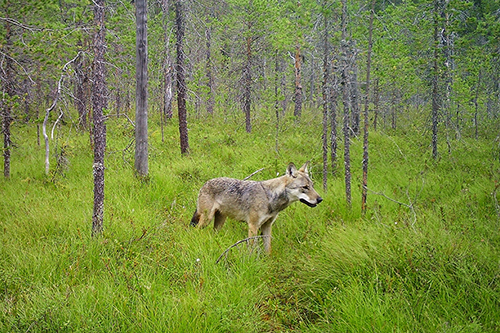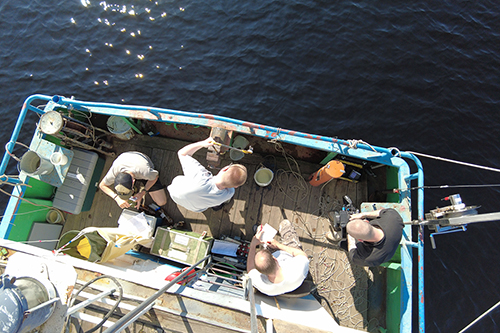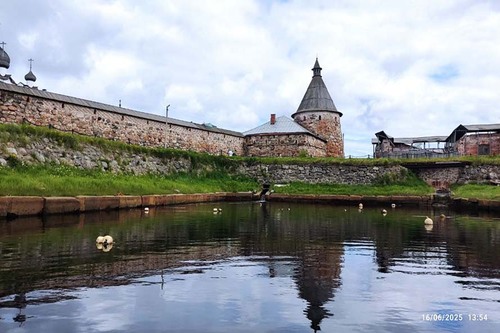Prionezhye area has long attracted geologists. Yalgora was studied by the outstanding geologist Franz Levinson-Lessing more than a hundred years ago. He had at his disposal the then advanced method of microscopic study of rocks. Its application provided the researcher with the results that are still in demand today. However, ancient lavas at the base of the slope were hidden from the eyes of experts under a thick layer of sand. They were discovered several years ago, during the construction of a ski center. The discovery captured the interest of researchers at the Institute of Geology of the Karelian Research Center RAS.
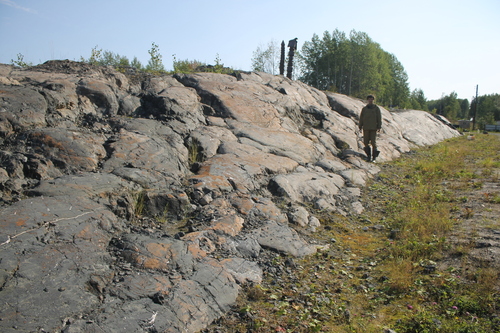
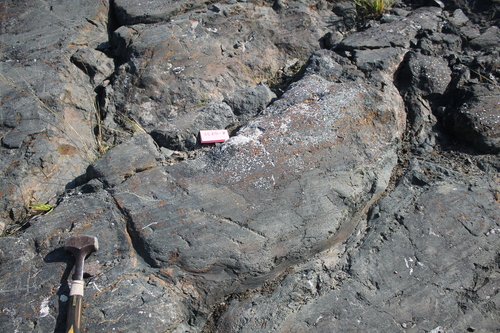
Pillow lavas at the foot of a mountain skiing slope. Photos by S. Svetov / KarRC RAS
– The pillow lavas of Yalgora formed when magma erupted underwater, probably at the bottom of a large marine basin. The cold water caused the lava to be covered in a hard crust, forming spheres. They accumulated and became deformed, taking the shape of pillows, hence the name pillow, or globular, lava. We found millimeter-sized inclusions of solid carbonaceous matter in these lavas. Detailed microscopic studies and modern analytical methods helped to determine the structure of this substance, to find out how it appeared and why it was preserved in the ancient lavas. Raman spectroscopy revealed the amorphous structure of the carbon, which differs from the graphite typical in such cases. According to isotopic analysis, carbon in the pillow lavas is of biogenic origin. In fact, we are dealing with ancient hydrocarbons (petroleum), which for some reason were preserved in the basaltic melt. This is surprising because petroleum is an unstable substance. The temperature at which the lavas formed could reach 1200 °C, and petroleum was supposed to have vaporized or been transformed into graphite under such conditions, – explained Alexandra Stepanova, participant of the study, Leading Researcher at the Precambrian Geology and Geodynamics Laboratory, Institute of Geology KarRC RAS.
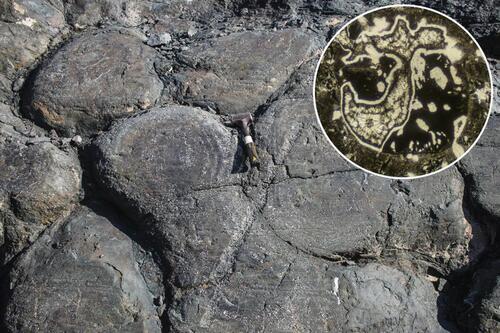
Traces of ancient petroleum in Yalgora pillow lavas. Photo by V. Ustinova / KarRC RAS
The results of Yalgora lava studies were published in the international journal Lithos. Researchers demonstrated that the possible reason for biogenic carbon to appear in the pillow lavas is that shortly before being erupted to the surface, magma captured a fairly significant amount of carbonaceous matter from a shallow oil basin. Because the time between its capture and complete cooling of the rock was short, it was not metamorphozed into graphite or changed to the gaseous phase.
Microscopic traces of the carbonaceous matter that scientists discovered in the lavas suggest there might exist an ancient oil basin. Previously, Karelian geologists demonstrated that such a basin, the "Shun’ga oil field", really existed in the territory of the republic about 2 billion years ago. Lengthy transformations have altered it considerably, leading to the formation of unique rocks known as shungites.
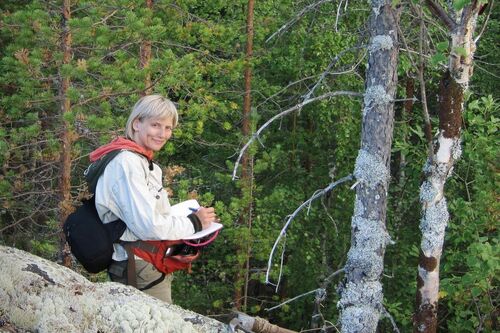
Alexandra Stepanova, participant of the study, Leading Researcher at the Precambrian Geology and Geodynamics Laboratory, Institute of Geology KarRC RAS. Photo by A. Samsonov / IGEM RAS
– The finding of basalts with biogenic carbonaceous matter is a unique occasion for ancient lavas. Such objects store information about how oil was formed in the early stages of the Earth's development and whether these processes differed from modern ones. In our work we try to understand the mechanism of carbonaceous matter capture and how it managed to be preserved, – Alexandra Stepanova summed up.
Next, the researchers plan to clarify the interactions between the carbonaceous matter of shungite rocks and ancient magmas. The activities will be continued in Zaonezhye and Prionezhye areas.





